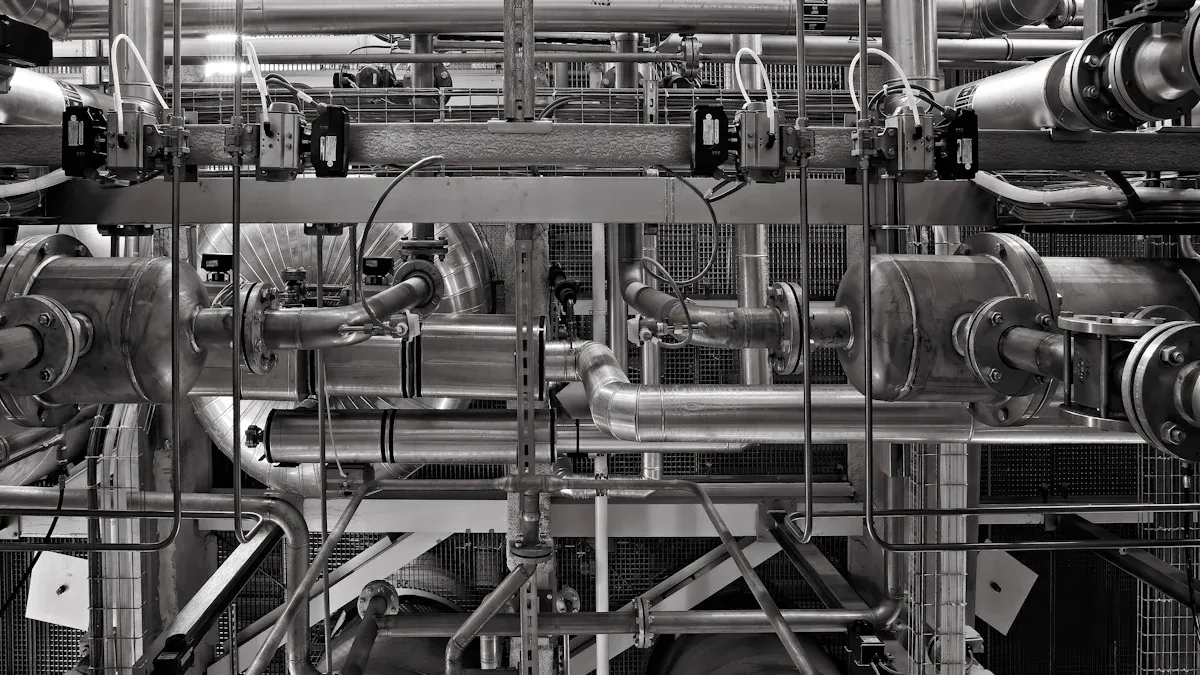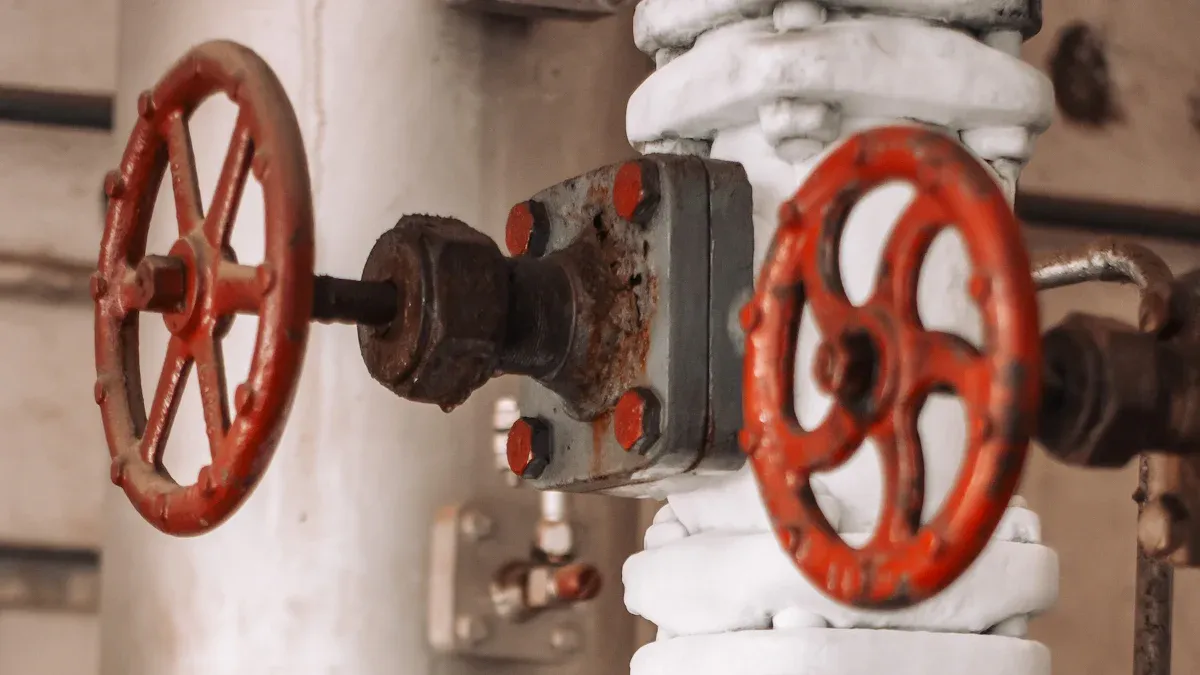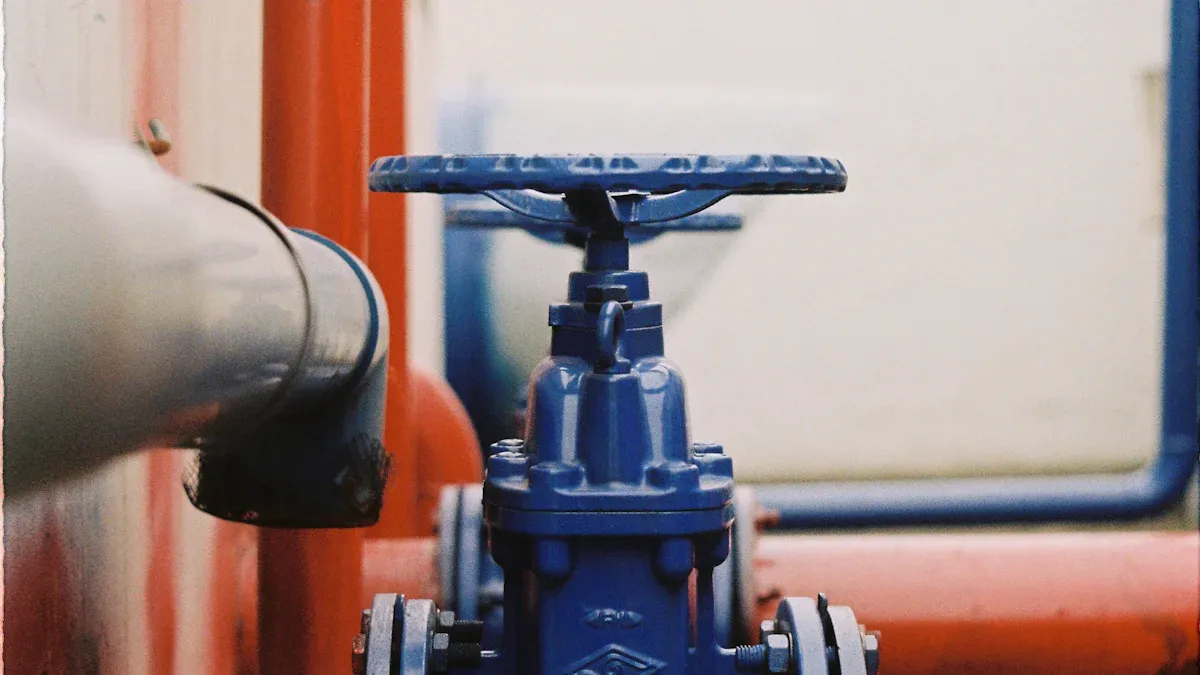The Surprising Truth About Four Way Three Position Valves

Four Way Three Position Valves are essential components for controlling fluid flow in both hydraulic and pneumatic systems. These valves deliver precise functionality by offering three unique positions and four ports, facilitating operations such as advancing, retracting, and holding. When selecting the ideal valve for your system, it’s important to consider several key factors:
- Identify the correct size based on the dimensions of the inlet and outlet pipes.
- Evaluate the flow capacity (Cv) to determine the most suitable options.
- Check the maximum pressure and fluid temperature requirements for your application.
- Ensure that the pressure and temperature specifications align with the valve's published ratings.
By carefully addressing these considerations, you can ensure the valve is perfectly suited to meet your system's operational needs. Whether utilizing Four Way Three Position Valves or a 4 Way 3 Position (Spool-type) valve, understanding these critical parameters is vital for achieving optimal system performance.
Key Takeaways
- Four Way Three Position Valves move fluids in three ways: forward, backward, and stop. Knowing these helps them work well.
- Pick the right valve size by checking your system's pipe sizes. Correct sizing stops problems and improves how it works.
- Check how much flow and pressure the valve can handle. This makes sure it works safely and efficiently.
- Use materials that won't react badly with your system's fluids. This stops rust and makes the valve last longer.
- Take care of valves regularly to keep them working. Plan check-ups to avoid surprises and expensive fixes.
What Are Four Way Three Position Valves?

Definition and Basic Functionality
Four Way Three Position Valves are specialized components designed to control fluid flow in hydraulic and pneumatic systems. These valves feature four distinct pathways and three operational positions, enabling precise control over fluid direction. The three positions typically include advance, retract, and hold, making them versatile for various applications.
The design of these valves ensures efficient operation by allowing fluid to flow in multiple directions based on the selected position. For example, in the "advance" position, the valve directs fluid to extend an actuator. In the "retract" position, it reverses the flow to retract the actuator. The "hold" position blocks fluid movement, maintaining the actuator's position.
To better understand their technical specifications, consider the following example:
| Feature | Description |
|---|---|
| Model | LSV10-34Y |
| Type | Four Way Three Position Electromagnetic Directional Valve |
| Operational Positions | Three |
| Pathways | Four |
| Actuation | Electromagnetic |
| Applications | Hydraulic flow control in various industrial environments |
| Advantages | Fast response times, enhanced control, durability, and reliability |
This table highlights the key features of a typical Four Way Three Position Valve, showcasing its functionality and advantages.
Common Applications and Use Cases
You will find Four Way Three Position Valves in a wide range of industries due to their adaptability and precision. In manufacturing, these valves Control Hydraulic presses and robotic arms, ensuring smooth and accurate movements. In construction, they are integral to heavy machinery like excavators and loaders, where precise fluid control is critical for operation.
In HVAC systems, these valves regulate the flow of refrigerants or other fluids, maintaining optimal system performance. They also play a vital role in automotive systems, particularly in controlling hydraulic brakes and suspension systems. Their ability to handle high pressures and provide reliable performance makes them indispensable in these demanding environments.
By understanding their functionality and applications, you can appreciate why Four Way Three Position Valves are essential for efficient fluid control across various systems.
Key Factors to Consider When Choosing Four Way Three Position Valves
Type of Actuation (Manual, Pneumatic, Electric)
The type of actuation determines how you control the valve's operation. Manual actuation involves physical effort, making it suitable for simple systems with infrequent adjustments. Pneumatic actuation uses compressed air, offering faster response times and better control for automated systems. Electric actuation provides precise control and is ideal for systems requiring remote operation or integration with advanced automation technologies.
The shift toward automation has made electric and pneumatic actuation increasingly popular. These options enhance efficiency and reduce manual intervention, especially in industrial environments.
When selecting the actuation type, consider your system's level of automation, operational speed requirements, and available energy sources. For example, pneumatic actuation is often preferred in environments where compressed air is readily available, while electric actuation is better suited for systems requiring high precision.
Flow Requirements and Pressure Ratings
Flow requirements and pressure ratings are critical for ensuring the valve operates effectively under your system's conditions. The valve's size and dimensions must align with the expected flow rates to prevent bottlenecks or inefficiencies. Similarly, the pressure rating must match or exceed the maximum pressure of your process to ensure safety and reliability.
| Factor | Description |
|---|---|
| Flow Requirements | Determines the valve's size and capacity to handle expected fluid volumes. |
| Pressure Ratings | Ensures the valve can withstand the highest pressure in the system without failure. |
For example, a hydraulic system operating at high pressures requires a valve with a robust pressure rating to maintain integrity. Always verify the valve's specifications against your system's maximum pressure and fluid temperature to avoid operational issues.
Material Compatibility with Media
The material of the valve must be compatible with the media it will handle to prevent corrosion, wear, or chemical reactions. Stainless steel is a popular choice for corrosive environments due to its durability and resistance to rust. Cast iron works well for general applications, while copper alloys are ideal for systems requiring good thermal conductivity.
| Material Type | Application Context |
|---|---|
| Cast Iron | Suitable for low-pressure systems and general applications. |
| Stainless Steel | Best for corrosive environments and high-pressure applications. |
| Copper Alloys | Ideal for systems needing excellent thermal and electrical conductivity. |
| Plastics | Lightweight and cost-effective for low-pressure, corrosive applications. |
| Exotic Materials | Used in demanding applications but come with higher costs. |
A chemical compatibility database can help you assess the suitability of valve materials for over 600 chemicals. This ensures the selected material can handle the specific media in your system, reducing the risk of damage or hazardous situations.
By carefully evaluating these factors, you can select the right Four Way Three Position Valve for your application, ensuring optimal performance and longevity.
Port Configuration and Size
The port configuration and size of a valve play a pivotal role in determining its efficiency and compatibility with your system. When selecting a valve, you must ensure that its dimensions align with the anticipated flow rates and the piping system's specifications. A mismatch in size can lead to inefficiencies, such as pressure drops or restricted flow, which can compromise the overall performance of your system.
A four-way valve typically features a chamber with four ports. These ports connect to the system's inlet, outlet, and actuator lines, allowing fluid to flow in multiple directions. The spool inside the valve, which can take forms like a cylinder or cone, moves to control the flow between these ports. Each port supports two flow positions, and the spool's central position is critical for maintaining precise fluid control. This design ensures that the valve can handle complex operations, such as advancing, retracting, or holding an actuator in place.
The size of the ports also directly impacts the valve's ability to manage flow rates. For example, control valves and check valves are particularly sensitive to flow rates, making it essential to select the correct size for optimal performance. A valve that is too small may restrict flow, while an oversized valve could lead to unnecessary costs and inefficiencies.
When evaluating port configuration, consider the specific requirements of your application. For instance, industrial systems with high flow demands may require larger ports, while smaller systems benefit from compact configurations. By carefully assessing these factors, you can ensure that your Four Way Three Position Valves deliver reliable and efficient performance in your system.
Matching Four Way Three Position Valves to Your Application

Industrial Applications
Four Way Three Position Valves are indispensable in industrial settings where precise fluid control is critical. These valves, such as the LSV10-34Y model, are engineered to manage hydraulic flow efficiently. With four pathways and three operational positions, they ensure accurate fluid direction, making them ideal for demanding environments like manufacturing plants and assembly lines. Their ability to handle high pressures and maintain consistent performance enhances productivity and reduces downtime.
The growing adoption of IoT in industrial processes has further increased the demand for automated Four Way Diverter Valves. These valves not only improve operational efficiency but also provide valuable data for predictive maintenance. By integrating these valves into your system, you can achieve better control, reduce manual intervention, and enhance overall system reliability.
HVAC Systems
In HVAC systems, Four Way Three Position Valves play a pivotal role in regulating fluid flow and maintaining optimal performance. These valves perform two essential functions within the valve body: controlling water temperature and preventing flue gas condensation. Unlike traditional three-way valves, which require additional circulators, four-way valves simplify system design by integrating both mixing points. This design improves efficiency and reduces installation complexity.
When selecting a valve for your HVAC system, consider key performance metrics such as operating pressure, temperature, and flow rates. For instance, the valve's size and dimensions must align with the system's flow requirements to ensure smooth operation. Additionally, the pressure rating should match the system's maximum pressure to prevent failures. By understanding these metrics, you can choose a valve that meets your system's specific needs.
| Metric | Description |
|---|---|
| Size and Dimensions | Ensures compatibility with flow rates and system requirements. |
| Pressure Rating | Prevents valve failure by matching the system's maximum pressure. |
| Material Selection | Determines durability and compatibility with the processed media. |
| Actuation Methods | Influences operational efficiency and integration with automation. |
Hydraulic Systems
Hydraulic systems rely on Four Way Three Position Valves for precise directional flow control. These valves feature four distinct pathways, allowing for optimal fluid management in applications such as excavators, loaders, and other heavy machinery. Their fast response times, enabled by electromagnetic actuation, enhance system responsiveness and ensure smooth operation.
The benefits of these valves extend beyond performance. Enhanced control mechanisms improve overall system efficiency, reducing energy consumption and operational costs. For example, in a hydraulic excavator, these valves enable precise movements by managing fluid flow to the actuators. This level of control ensures that the machinery operates effectively, even under demanding conditions.
| Benefit | Description |
|---|---|
| Precise Directional Flow | Offers optimal flow management for hydraulic systems. |
| Fast Response Times | Ensures quick operation through electromagnetic actuation. |
| Enhanced Control | Improves system efficiency and reduces energy consumption. |
By matching the right valve to your hydraulic system, you can achieve superior performance and long-term reliability.
Four Way Three Position Hydraulic Valves for Excavators: Flow Rate, Pressure Drop & Compatibility Guide
When selecting Four Way Three Position Valves for excavators, you must evaluate three critical factors: flow rate, pressure drop, and compatibility. These parameters directly influence the valve's performance and the overall efficiency of your hydraulic system.
Flow Rate: Ensuring Optimal Performance
The flow rate determines how much hydraulic fluid the valve can handle within a specific time. A valve with an insufficient flow rate can restrict fluid movement, reducing the excavator's operational speed. Conversely, an oversized valve may lead to inefficiencies and unnecessary costs. To find the right balance, calculate the system's required flow rate based on the excavator's hydraulic pump capacity. For example, a valve designed for 20 gallons per minute (GPM) is ideal for medium-sized excavators.
Pressure Drop: Maintaining System Efficiency
Pressure drop refers to the reduction in hydraulic pressure as fluid passes through the valve. Excessive pressure drops can strain the system, leading to energy losses and reduced performance. To minimize this, choose a valve with a low-pressure drop rating that matches your system's operating pressure. For instance, a valve with a pressure drop of less than 10 PSI ensures smoother operation and reduces wear on components.
Compatibility: Matching Valve Materials and Media
Material compatibility is crucial for ensuring the valve's durability and reliability. Hydraulic systems in excavators often use oils or synthetic fluids, which require valves made from materials like stainless steel or cast iron. These materials resist corrosion and withstand high pressures, making them suitable for demanding environments. Always verify the valve's material against the hydraulic fluid specifications to avoid premature failure.
Pro Tip: Consult the excavator's manufacturer guidelines to ensure the valve's specifications align with the system's requirements. This step helps you avoid costly downtime and maintenance issues.
By carefully considering these factors, you can select a valve that enhances your excavator's performance and ensures long-term reliability.
Common Mistakes to Avoid When Selecting Four Way Three Position Valves
Overlooking Maintenance Requirements
Neglecting maintenance can significantly impact the performance and lifespan of your Four Way Three Position Valves. Routine upkeep ensures reliability and prevents unexpected failures. A proactive maintenance strategy allows you to identify and address potential issues before they escalate. This approach not only enhances valve performance but also minimizes costly repairs.
| Aspect | Proactive Maintenance | Reactive Maintenance |
|---|---|---|
| Downtime | Reduces unanticipated shutdowns | Increases production downtime |
| Financial Consequences | Minimizes associated financial losses | Leads to higher costs due to unexpected repairs |
| Problem Prevention | Stops latent issues before they escalate | Addresses problems only after they occur |
By scheduling regular inspections and cleaning, you can reduce downtime and extend the valve's operational life. Ignoring maintenance, on the other hand, often results in higher costs and production delays. Always prioritize a proactive approach to keep your system running smoothly.
Choosing the Wrong Actuation Type
Selecting the wrong actuation type can compromise the efficiency of your system. Each actuation method—manual, pneumatic, or electric—has specific advantages suited to different applications. For example, manual actuation works well for simple systems with minimal adjustments. Pneumatic actuation offers faster response times, making it ideal for automated setups. Electric actuation provides precise control and integrates seamlessly with advanced automation.
Tip: Evaluate your system's energy sources, operational speed, and automation level before choosing an actuation type. For instance, pneumatic actuation is optimal in facilities with readily available compressed air, while electric actuation suits systems requiring high precision.
Choosing an unsuitable actuation type can lead to inefficiencies, increased energy consumption, or even system failures. Always align the actuation method with your system's specific needs.
Ignoring Environmental Conditions
Environmental factors play a critical role in valve performance. Extreme temperatures, humidity, and exposure to corrosive substances can degrade valve materials over time. For instance, stainless steel valves perform well in corrosive environments, while cast iron is better suited for general applications.
Note: Always assess the operating environment and select materials compatible with the media and conditions. This ensures durability and prevents premature wear.
Ignoring these conditions can result in frequent replacements and higher maintenance costs. By considering environmental factors during selection, you can enhance the valve's longevity and reliability.
Four Way Three Position Valves are indispensable for precise fluid control across hydraulic and pneumatic systems. Their ability to stop, allow, and redirect fluid flow ensures efficiency and versatility in various applications, from industrial machinery to HVAC systems. Proper valve selection enhances operational efficiency, prevents system damage, and reduces maintenance needs, contributing to long-term reliability. By understanding their functionality and aligning them with your system’s requirements, you can optimize performance while avoiding costly errors. Always consider environmental conditions and material compatibility to ensure durability and safety.
Tip: Choose valves designed for your specific application to maximize efficiency and extend system lifespan.
FAQ
What makes Four Way Three Position Valves unique?
These valves offer three operational positions and four ports, enabling precise control of fluid flow. Their ability to advance, retract, or hold actuators makes them versatile for hydraulic and pneumatic systems.
How do I determine the correct valve size?
Evaluate your system's flow rate and pressure requirements. Match these parameters with the valve's specifications to ensure compatibility and optimal performance.
Can these valves handle corrosive fluids?
Yes, if you select the right material. Stainless steel works well for corrosive environments, while other materials like cast iron suit general applications. Always check material compatibility with your media.
Are Four Way Three Position Valves suitable for automation?
Absolutely. Pneumatic and electric actuation options integrate seamlessly with automated systems, offering precise control and faster response times.
How often should I maintain these valves?
Regular maintenance depends on your system's usage and operating conditions. Inspect and clean the valves periodically to prevent wear and ensure long-term reliability.











